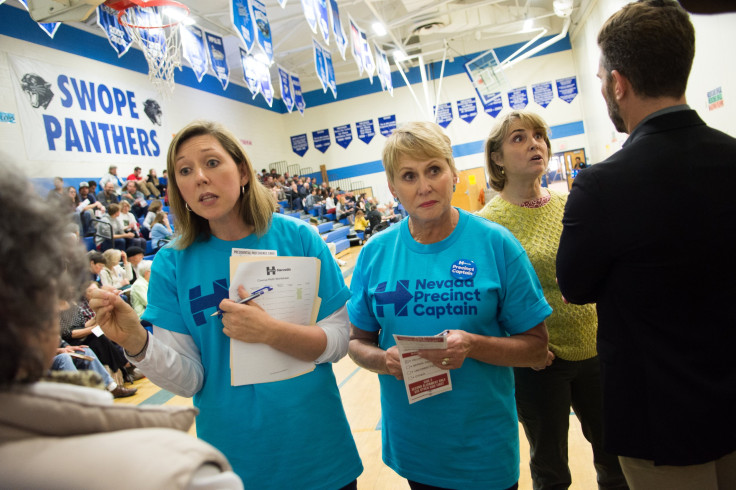Nevada Democratic Caucuses News: Party Leaders Announce Last-Minute Changes To Vote Tally

KEY POINTS
- Nevada Democrats want to avoid a repeat of the Iowa fiasco that delayed caucus results for days
- The state party first ditched plans to use a Shadow Inc. app, and now have rejected a Google form, as well
- 2,097 precinct caucus sites will host the voting, the results of which will be combined with 75,000 ballots cast in early voting
So much for bringing the Nevada caucuses into the 21st century: The state Democratic party decided Friday to ditch plans to use a Google form to report results and instead will rely on the old-fashioned way – a phone-based system it has used for decades.
Voters were scheduled to caucus Saturday in the third contest of the presidential primary season, mindful of the debacle that occurred in the first-in-the-nation Iowa caucuses that have left its results in doubt.
Nevada precinct leaders were to use a dedicated phone hotline and text messaging to calculate delegates, a memo circulated to the campaigns said. The tried-and-true method, however, may not avert an Iowa-like disaster since that state’s phone lines were flooded by nuisance calls after the number was leaked online.
“The hotline report will be the primary source of the precinct caucus results reported on caucus day,” state party Executive Director Alana Mounce wrote in the memo.
“After their precinct caucuses conclude, the precinct chairs will call a hotline to securely report their results to a trained operator, will submit via text a photo of their caucus reporting sheet to state party staff through an established MMS reporting hub, and then they will return their caucus reporting sheet and other materials to their site lead.”
The memo did not say when the results would be made public.
Nevada party officials originally planned to use an app for reporting results from Shadow Inc. but abandoned the plan after a Shadow app failed in Iowa. The party then proposed using the Google Forms tool and has been conducting training sessions for volunteers.
Nevada Democrats will caucus at 2,097 precincts. Like the Iowa caucuses, there will be two rounds of voting, with district- and state-level caucuses to follow ahead of the Democratic National Convention in Milwaukee, July 13-16. A change in national party rules this year requires both sets of results to be reported and paper tally sheets to be kept. Complicating the process are 75,000 ballots cast in four days of early voting.
It is unclear how many people will participate in the caucuses. In 2008, 118,000 showed up but the number dropped drastically in 2016 to just 84,000. To win any delegates, a candidate needs to achieve a certain level of support depending on how many candidates are running in a given precinct. In most cases, the level is 15%.
Top tier candidates Sens. Bernie Sanders, Elizabeth Warren and Amy Klobuchar, along with former Vice President Joe Biden and former South Bend (Ind.) Mayor Pete Buttigieg are on the ballot. Rep. Tulsi Gabbard and businessman Tom Steyer’s names also appear.
The ballot also lists candidates who have ended their bids for the Democratic presidential nomination: Sen. Michael Bennet, former Rep. John Delaney, former Massachusetts Gov. Deval Patrick and businessman Andrew Yang.
The Nevada Republican party canceled its caucus, saying it would be a waste of money.
© Copyright IBTimes 2025. All rights reserved.






















